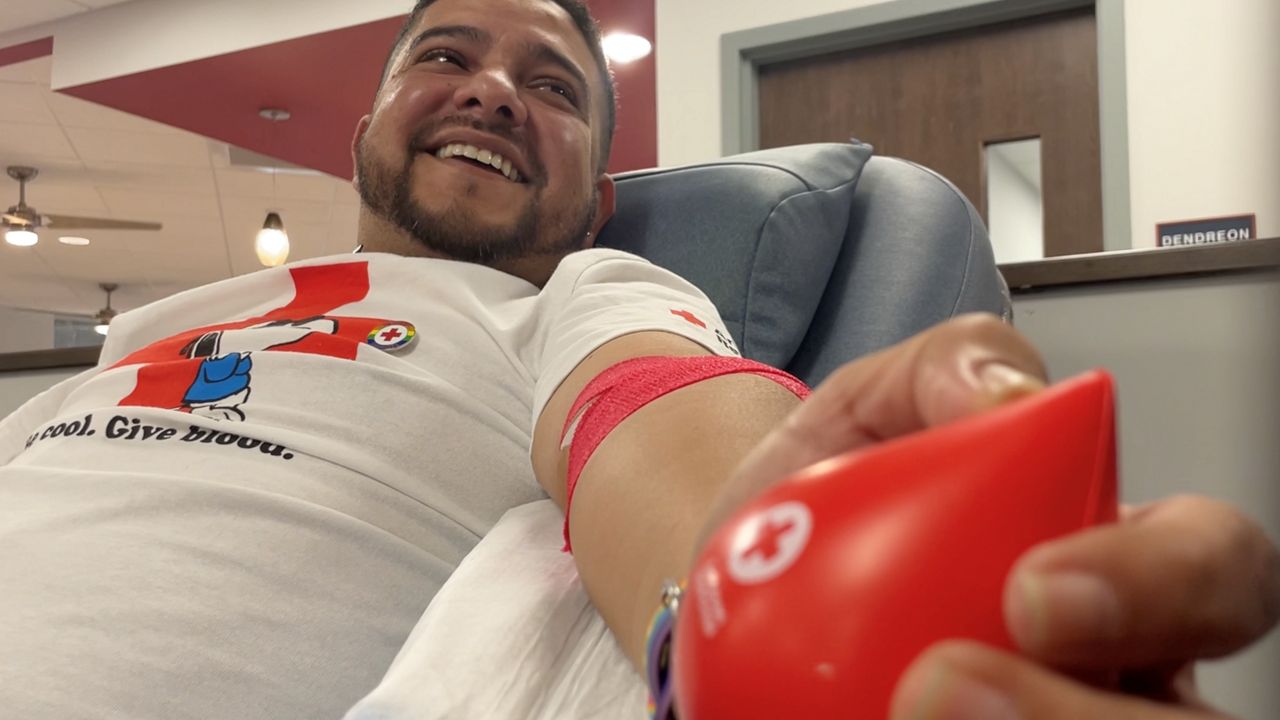Blood
Updated donation guidelines welcome new LGTBQ blood donors
WOODLAND HILLS, Calif. — After many years, Hugo Velasco will finally get the chance to donate blood.
“It was frustrating before when you tried to donate, and they would exclude you,” said Velasco.
What You Need To Know
- Approximately 29,000 units of red blood cells are needed every day in the U. S.
- The blood type most often requested by hospitals is type O
- Each year, an estimated 6.8 million people in the U.S. donate blood, each year
- Every donated unit of blood undergoes a rigorous series of tests to determine any blood borne disease
Velasco identifies as gay, is in a monogamous relationship with a man and is from Colombia. It was in his home country where Velasco tried to help a cousin with hemophilia that he was first rejected from donating.
“Not being able to help him at every turn because I am gay was painful,” said Velasco.
It stemmed from the AIDS crisis, an FDA lifetime ban on donations from men who have sex with men. A ban that Hugo feels inflamed stigmas that cloud gay and bisexual men.
“If you’re gay, they relate you with HIV, AIDS and bad sexual behaviors,” said Velasco.
Velasco, who was a nurse in Colombia, volunteered with the American Red Cross since he wasn’t allowed to donate blood.
“I had to tell people, no, you cannot [donate] because you’re gay,” said Velasco. “There are a lot of gay people in the community that we have helped.”
In 2015, that lifetime ban was relaxed. Men who have sex with men could donate after a one year abstinence period.
During the pandemic, that period was reduced to three months as blood donations dropped and the supply thinned out.
At the start of August, updated guidelines opened the doors for most gay and bisexual men to donate blood. Eligibility is now based on a person’s individual risk behaviors rather than gender or sexual identity.
“All donors are asked the same questions,” said Dr. Catherine A. Mazzei, medical director for the American Red Cross’ Northern Region. “This is to identify if they’re engaging in any behaviors that could be considered a higher risk.”
Dr. Mazzei believes this is the right move and there are years of scientific research to back the move and series of tests to determine any possible presence of blood-borne disease.
“We want to make sure that the blood supply is safe for the recipients and that the process is safe for the donors,” said Dr. Mazzei. “Its shown that this individual approach, rather than a gender-based deferral approach, is as safe as, if not safer than previous methods.”
It’s an approach that Dr. Mazzei knows, allows donors the chance to make a difference and a change that will ensure that people like Velasco are able to donate the gift of life.
“I’m feeling so good,” said Velasco. “I’m part of the change, you know that things are changing.”

